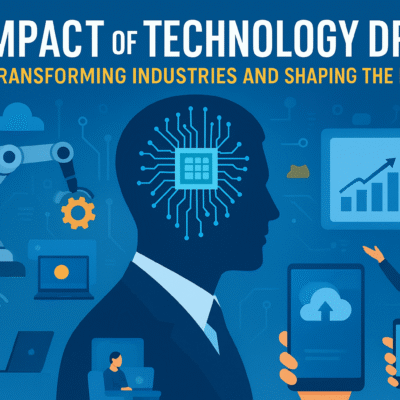Have you ever wished that your virtual world was able to know some of the applications that are operating using the infrastructure? This is VMware vRealize Infrastructure Navigator (VIN).
This tool increases the level of intelligence in your vSphere to find out the applications and dependencies in a much superior granularity, or application layer, which is achieved via automation.
Consider the scenario that tries to prepare a server migration process only to identify that you have no idea what services, ports, or applications are attached to a given VM. This scenario most probably will result in unwanted downtimes.
This issue is mitigated with vRealize Infrastructure Navigator, which reflects the interaction of applications and their real-time operation. It is like you established a great vision where you can see into your whole VMware stack.
In this guide, we will significantly discuss what vRealize Infrastructure Navigator accommodates, the way it works, and what it offers in terms of clarity of operations, mitigation of risks, and provision of improved selections.
What does vRealize Infrastructure Navigator mean?
VIN (vRealize Infrastructure Navigator) is a VMware plug-in that offers application awareness within a virtual environment.
It gives visibility to the concerned applications to the virtual machines. This becomes increasingly pertinent in the reality of modern IT ecosystems that are unprecedentedly multi-layered and interdependent due to globalization.
Running with vCenter Server, VIN is a virtual appliance that has a seamless installation. Users can see software relationships in the vSphere net customer.
VIN is unique in the following sense:
- It automatically identifies services and apps running within VMs
- It draws interdependencies between different parts.
- It displays connections and streams within vCenter in real time.
This kind of visibility is priceless when scheduling, troubleshooting, and streamlining things.
Function and Values of VIN in VMware Environment
What point is there in even considering application visibility? Well, the infrastructure is there as a conjunction and no longer in isolation: it’s miles all approximately the apps.
VIN offers admins and operators an inspect into what the apps are appearing, how they may be making moves, and what infrastructure they are making use of.
VIN top advantages are:
- Situational awareness: Awareness of what is busy/quiet and the place.
- Managed changes better: Do not break dependencies.
- Reduced threats: Have an idea about the effects of maintenance/migrations.
- Faster diagnosis: Diagnose problems between infrastructure and apps.
The Operation of vRealize Infrastructure Navigator: So, how is vRealize Infrastructure Navigator working properly? Exactly what is it doing to make it such a magical experience?
Identifying Applications and Dependency Mapping
The VIN scans digital machines, identifying which applications, offerings, and ports it uses thru agentless discovery. The most standard workloads determined are:
- Microsoft SQL Server
- Apache Tomcat
- Oracle DB
- IIS
- SAP
- Programmable TCP-based applications
VIN produces a dependency map with the indication of the traffic patterns and inter-VMs associations.
vCenter Server and vRealize Operations integration
VIN is very much incorporated with vCenter and vRealize Operations (vROps). It improves awareness of applications on VM summary pages, and it facilitates performance/compliance analytics on vROps.
Dependency Mapping
VIN captures:
- The VMs’ communication
- Applications’ ports
- Client-server relationships
Critical to planning, security, and incident response.
Information Technology Visibility and Control
VIN allows:
- Application/infrastructure tagging
- Policy-based grouping
- Business services and tiers definition
Example: Tag VMs as Finance App and set access/monitoring policies through vROps.
Business Impact Analysis
VIN permits studying the effect of a trade previous to making a change to a VM:
- Take a look at dependent services
- Find dangerous systems out
- So plan time off strategically
Prepare contingencies
Disaster Recovery Plans Optimization
VIN supports:
- Mapping multi-tier applications
- Planning of recovery order Recovery order Planning
- Dependency-sensitive DR scripts
Ex: Web-tier -> Payment API -> DB -> Cache- all must be recovered coordinately.
Enhancement of security and control Strengthening Protection and Governance
VIN assists security teams in the following ways:
- Identifying open port services
- Discovery of unexpected data flows
- Finding out what applications are outdated
VIN helps to improve compliance audits (PCI-DSS, HIPAA, ISO, etc.) with the help of visibility and traceability.
Installation or putting up the VIN
System Requirements
- vCenter Server: Compatible 5.x, 6.x
- Integration UI vSphere Web Client:
- Browser: Firefox/Chrome (most recent)
- Spec Config: 4 portions of GB RAM, 2 vCPUs
First Time Set up Guide (15 minutes)
- install VIN OVA VMware
- Deploy through Web Client vSphere
- Set Up network/IP/CPU/RAM
- Power on and configuration wizard done
- In Web Client, activate VIN plug-in
- Link VIN to vCenter
- Start mapping and creating maps
Initiatory Steps of Configuration
- Calibrate discovery periods
- Create application tags/groups
- Do not leave out scream services
- Connect to vROps
Being started by VIN, the process of application discovery takes 1015 minutes.
VRealize Infrastructure Navigator limitations
Important complexities and identifications of limitations
- End of Life: No support or future update
- Small Catalog: Lacks custom, cloud-native apps
- Static Visualization: Non-interactive maps
- Over-dependence of vSphere Web Client: Flex-based client deprecated
VRealize Infrastructure Navigator alternatives
VMware Aria Operations for Applications (f.K.a vRealize Network Insight)
- Full-stack analysis of flow
- Traffic discoverability of apps
- Micro-segmentation (NSX)
- Hybrid/cloud visibility
Third-Party Tools
- Dynatrace: Root cause intelligence provided by AI
- AppDynamics: Transaction tracing& monitoring
- SolarWinds: Server & App monitoring
- Datadog: Real-time analytics Cloud-native
Select according to stack, environment (cloud/hybrid) and budget.
Cloud and Post Modern IT Context of VIN
The reasons why VIN is not that significant now.
Modern IT is used in:
- Microservices
- Containers (Kubernetes)
- Hybrid/multi-cloud
- CI/CD pipelines
VIN lacks:
- Container support
- Fleeting service mapping
- Integration with the cloud Public
Tips to Users who are not at VIN Yet
What to do about It
- Audit an existing system
- Evaluate the use and users of VIN
- Check roadmap of review infrastructure
- Migration strategy plan
- Teach teams new technologies
- Test-run VIN + new tool chase
On a positive note, newer alternatives are more powerful, cloud-enabled, and insightful.
Conclusion
vRealize Infrastructure Navigator introduced app context, real-time mapping, and visualized dependencies to VM-centric environments.
The move to containers and microservices, and hybrids is killing VIN off today. Nevertheless, in the case of legacy systems, their usefulness has not gone anywhere yet.
And then it has served you well in getting this far, then mission accomplished
Read about: BetterThisTechs Articles by BetterThisWorld
FAQs
Does VIN detect tailor-made applications?
Partially. vRealize Infrastructure Navigator does quite well with enterprise apps, but not with custom/cloud-native apps.
What does VIN do to the vSphere upgrade?
In case of the new version of vSphere is not supported, it becomes non-functional.
Is there anything VMware native that could be an alternative to VIN?
Yes. The official successor is VMware Aria Operations for Applications.
Does VIN support containers or Kubernetes?
No. vRealize Infrastructure Navigator is not a Container orchestration platform.










